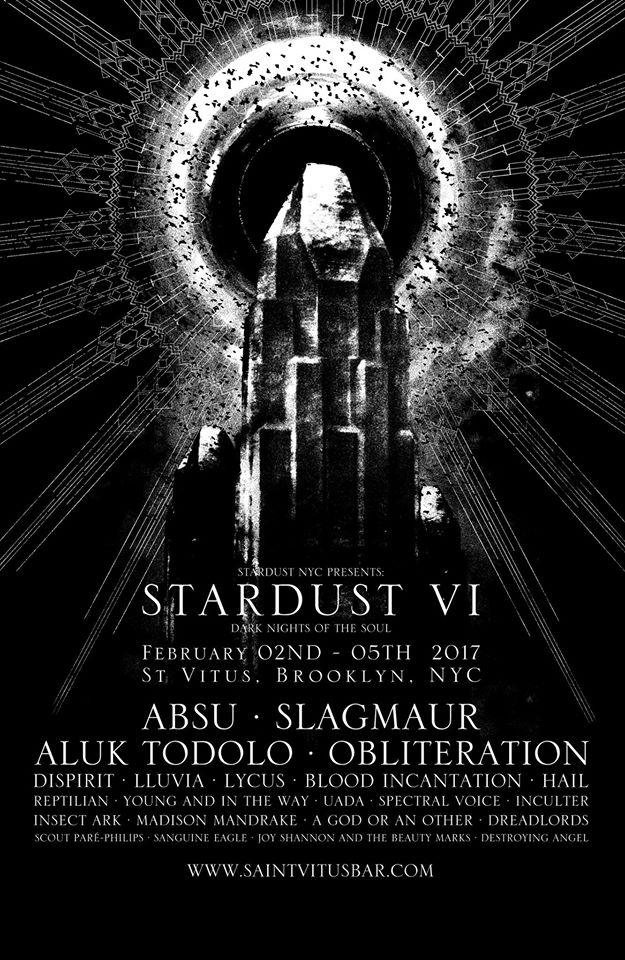Live @ Big Name sessions are finally a reality! I’d like to send a big thank you to Methczar for coming in yesterday and playing a few of their songs. I look forward to doing more of these in the future.
Bummer – Demo 2017
9 tracks (5 minutes) of punk/grind/powerviolence. Tracked, edited, mixed, and mastered at Big Name. This release was recorded on the studio’s Tascam 388 tape machine.
Holy North American Motor Highway – Self-Titled
Holy North American Motor Highway – Self-Titled
holynorthamericanmotorhighway.bandcamp.com
2 tracks (36 minutes) of orchestral art-punk. Tracked, edited, mixed, and mastered at Big Name. This release was recorded on the studio’s Tascam 388 and TEAC A-1200U tape machines.
Tapes were duplicated in the print shop.
Internet Roundup – January 2017
Here’s some amusing, interesting, insightful, or useful internet stuff I discovered in January of 2017.
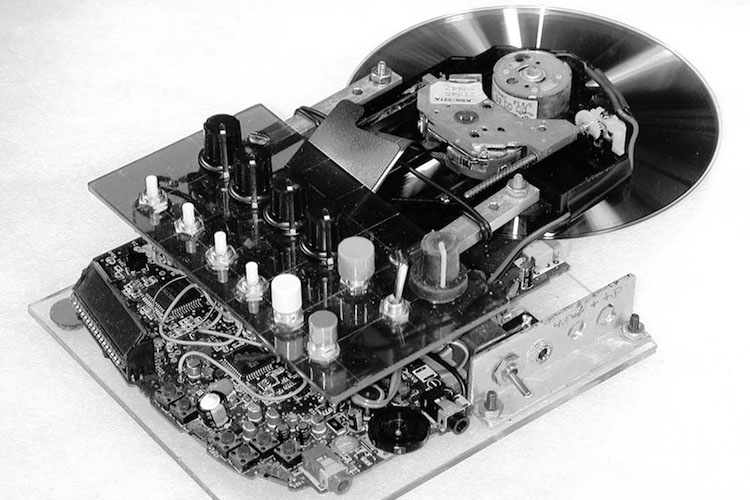
This article focuses on three avant garde artists who pioneered the idea of using CDs and CD players as instruments in their own right. Each of the artists has their own distinct approach to the idea. It is a solidly-written, long-form article that provides good historical context and that also functions as a jumping off point for further discovery. Most of this month’s Internet Roundup entries were discovered as a chain, one leading to the next; that process began with this article.
Turning the audio transmission device into an art generation tool is a musical tradition that has a rich history in our culture. There are many ways in which artists have subverted the intended use of a playback medium. Most musicians are familiar with the use of reel-to-reel tape players in this way, either as delay units or loop players. The turntable also has ended up being used in a similar creative manner as both a sampler and as a lead instrument via the familiar technique of scratching. These sounds have become a well-known part of our musical milieu. But using the CD player in the same way has never reached the same ubiquity.
I really like this kind of outside-the-box thinking. While not directly addressing this topic, this article raises questions about the untapped sonic possibilities in our current mediums: MP3s and streaming services. Is there a way to utilize these devices and services as musical instruments in their own right? Are there undiscovered sounds lurking in the structure of digital music playback that are interesting and usable? I would bet that there are.
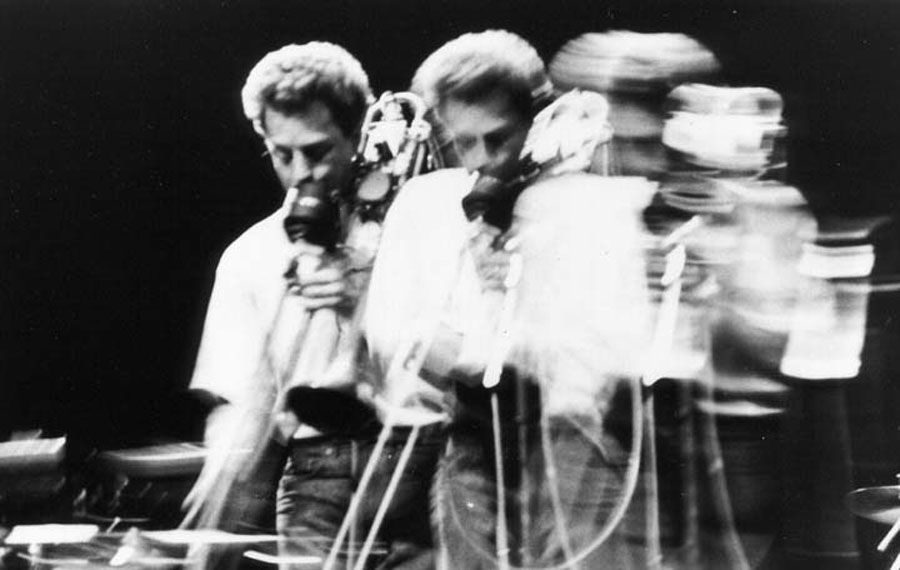
Nicolas Collins
nicolascollins.com
Nicolas Collins is featured in the above article from Soundfly due to his extensive usage of CD players as musical instruments. An interesting essay on his personal website about his CD-based works is referenced in the piece. Following that link exposed me to the rest of his body of work.
Collins is an experimental musician who is heavily influenced by John Cage and Alvin Lucier. Much of his work is electroacoustic, exploring the relationship of sound and space. He is very interested in creating works that question common, basic assumptions about music, and especially how those assumptions can be bent or broken. His work also often focuses on technology and how it can be built or modified to explore new musical possibilities.
As would be expected on a musician’s homepage, his site contains recordings of his pieces and his albums. Additionally, however, he makes available books and essays that he has written on practical and philosophical art topics. I appreciate when artists go into depth about the thought processes behind their works. Those discussions often bring about new, related ideas that can be explored. Beyond audio and writing, Collins also provides guides for making microphones and sound generators, as well as instructions on designing or bending circuits. Lastly, the site hosts many of his non-traditional scores, as well as custom software for performing some of these unique works. Collins has played with a lot of interesting ideas over the years and his catalog is inspiring in its creative breadth.

Joo Won Park is a composer and an assistant professor of music technology at Wayne State University. I found his work through his YouTube series 100 Strange Sounds. In this collection, Park generates samples from a variety of odd sources and processes them using a program called SuperCollider. This series makes use of many curious audio generation techniques. On his personal website this theme is explored further, branching into uncommon composition techniques as well.
Park’s work features non-traditional scores that often feature improvisational components. Some aspects of his compositions are generative. Many of his pieces feature a computer, often running digital sound manipulation algorithms that Park designed. One such composition, Control Click (dubbed a “piece for computer lab”) networks more than a dozen computers together. Each individual device performs a monophonic melody. All of them come together to create a generative audio-visual experience. As another example of something unique Park has done, in another performance he played a no-input mixer on an open-top bus as it drove through the city, interacting with the city as the artist and audience passed it by.
Park maintains a blog where he catalogs his works and also occasionally posts about software and fellow musicians that interest him.
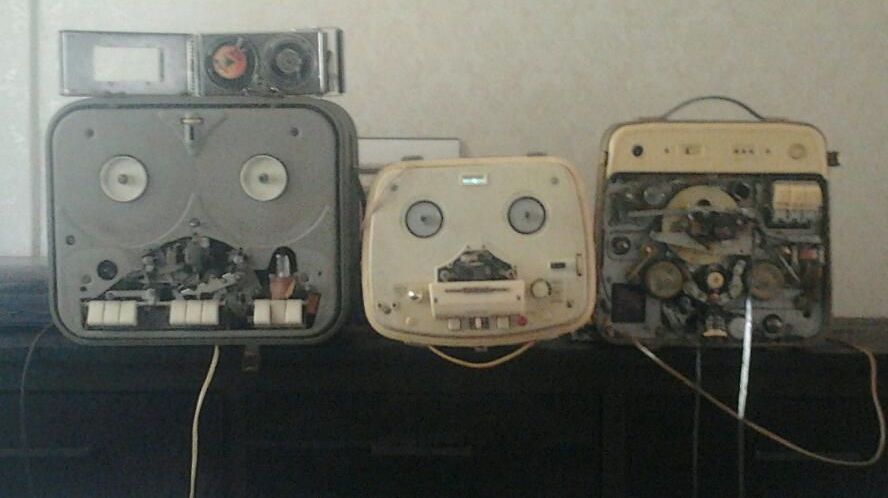
Wouter Van Veldhoven
www.youtube.com/user/woutervanveldhoven
Wouter Van Veldhoven is a Dutch based experimental artist whose medium is difficult to define. His YouTube channel is a showcase of his studio experiments, most of which include him chaining together dozens of components to create automated compositions. His work crosses the boundaries between electronic and acoustic, installation piece and music composition, robotics and art.
For me personally, ambient music is usually a genre of little interest. These compositions, however, manage to be truly fascinating. Van Veldhoven uses secondhand materials driven by an analog Doepfer sequencer and many, many reel to reel decks to bring his studio to life. He has a real passion for experimenting with old tape recorders. His compositions utilize classic tape based techniques, like creating loops and delays, but then he often gets radically more creative with his patching. One example of a more advanced technique he uses is to rig up one single loop of tape through multiple reel to reel decks. Another is to use his Doepfer to automatically reverse the playback of a tape in real time, creating unique effects.
He is not afraid of using all sorts of odd things as automated musical devices. This includes televisions, radios, miscellaneous broken machines, sine wave generators, cassette decks, solenoids, and an array of modified self-playing instruments like the reed organ, zither, and toy piano. Robot-based music is often gimmicky, but Van Veldhoven’s compositions are genuinely haunting and beautiful.
Utilizing tape so heavily as part of his production process imparts a lo-fi, nostalgic quality onto the sound of the pieces. The dropouts along with the wow and flutter somehow abstractly communicate that Van Veldhoven’s living studio is a wise old soul.
He has albums available at woutervanveldhoven.bandcamp.com, and he maintains a blog at woutervanveldhoven.tumblr.com.
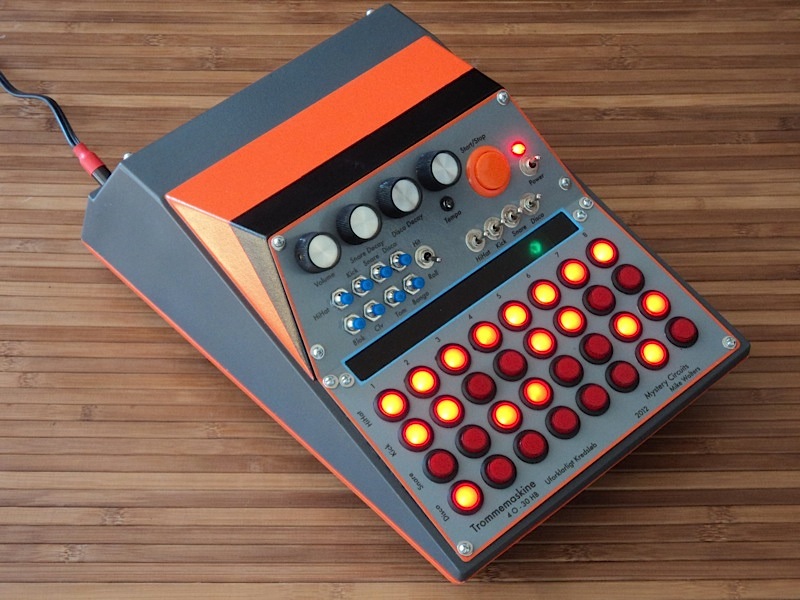
Mystery Circuits
mysterycircuits.com
Van Veldhoven’s monophonic cassette Mellotron made me wonder if anyone had used a bunch of cassette decks wired together to make a made a polyphonic Mellotron. A quick Google revealed that indeed, someone had.
That individual is Mike Walters of North Carolina. He’s a keyboardist and electronic instrument technician who designs his own creations during his free time. He then catalogs and writes about his instruments. On the site you can find oddities such as a drum machine where the snare is constructed of live radio waves, the aforementioned polyphonic cassette Mellotron, a repurposed and rehoused Italian auto-accompaniment machine, and much more. Quite a few of the devices on the site have audio and video samples, explanations of how the devices are played, and explanations of how they were built and how the circuits work.
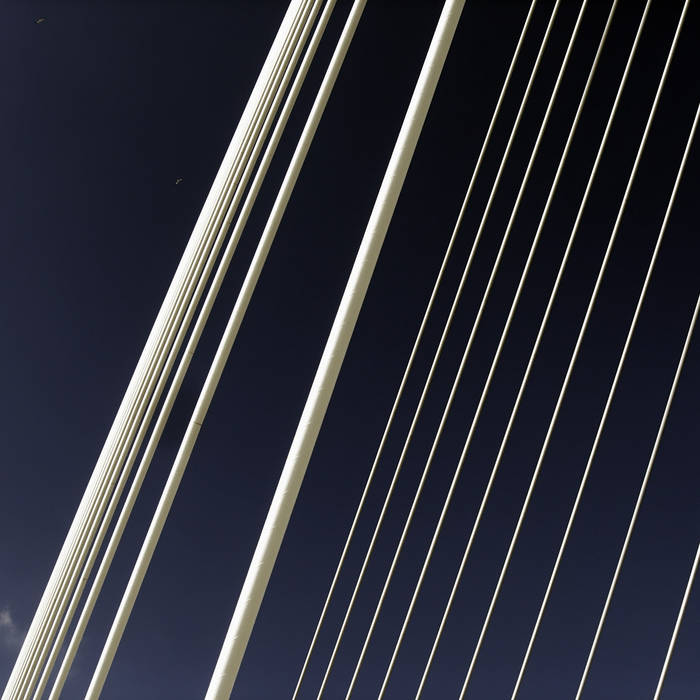
Acreil
www.youtube.com/user/acreil
My discovery of Acreil’s work also came about through further exploration of Van Veldhoven’s ideas. I was fascinated by his Doepfer sequencer and wanted to see if such a thing existed within the digital realm. That was when I found the program known as Pure Data and, subsequently, the experimental algorithmic compositions of Acreil.
In a Pure Data algorithmic composition, the composer creates a program that consists of a series of rules, math equations, and logic gates. These are known as “objects” in Pure Data. The various objects interact with one another in ways determined by the composer, eventually leading to a device that generates musical notes. These notes can be played using oscillators (which generate simple waveforms or white noise) or MIDI (which allows you to connect to virtual instruments in a DAW like Pro Tools). These waveforms come together to create a piece of music. The composer can write the program so that the music is unique on every playthrough, or so that it is the same every time, depending on how they orient their objects.
Out of the catalog of Pure Data algorithmic compositions, Acreil’s work is noteworthy for three reasons. Firstly, most Pure Data musicians that I have encountered either make ambient songs or outright noise pieces. Acreil seems to be one of the few who creates actual rhythmic compositions with drums. Secondly, he has experimented quite a bit with microtonal composition. While many microtonal pieces sound very dissonant, his sound quite consonant. Lastly, while Pure Data can be connected to a DAW like Pro Tools to utilize virtual instruments, Acreil uses the sound generators in Pure Data exclusively. The sounds he achieves are very complex, so his setups for each individual instrument in his compositions must be quite advanced.
My piece Key West, composed in January, is directly inspired by Acreil’s work. It uses Pure Data, a microtonal tuning, and only sounds generated within Pure Data. I intend to write more using this composition method in the future.
Acriel’s work can be found on YouTube and his longer albums can be found on Bandcamp. The other focus of his YouTube channel is demonstrating the capabilities of individual keyboards by composing songs that only utilize patches from the keyboard in question. While they are much less experimental, these end up being enjoyable compositions in their own right.

All the Scales
allthescales.org
Being generous, we tend to use roughly twenty different scales in Western music. In reality, however, most the music we hear utilizes a paltry two of those, Major and Minor. That fact gets sadder: those two scales contain all the same intervals! The only difference is the degree on which the scale begins.
William Zeitler took the time to catalog every possible scale within the 12-tone system that repeats at the octave and that does not contain a jump of more than 3 semitones. He determined that there are 1,490 different scales that can be made from these parameters, each with its own set of modes. Not being content with merely pointing out the existence of this wealth of scales, he also created MIDI files for each one and uniquely named every single mode of every scale.
These scales can be utilized within the chord-scale system, or they can be used as a starting point for composition. Many microtonalists complain that the chromatic system is too limited, but this website shows that even within the limited 12-tone system there is a huge amount of musical territory left to explore. (Not that that should stop anyone from exploring microtonality!)

JLIAT: Silences
www.jliat.com/silence
If every full-length CD that could possibly exist was played from beginning to end in succession, the resulting audio would be longer than the amount of time from the beginning to the theorized end of the universe.
That totality is impossible to recreate in the physical universe. Within the realm of all-discs-that-could-exist, however, there is a realizable possibility: discs of silence. Due to the way that CDs read audio, there are 65,536 unique discs that would cause a player to render only silence, totaling out at 9 years of playback. The creator of this conceptual art piece, James Whitehead, put together and made available 65,536 files that render 10 seconds of each one of these unique silences (which comes out to over a week of non-sound).
The piece is reminiscent of John Cage’s groundbreaking 4’33”. The idea of quantifiably different silences is quite strange, as is the idea that all music that could ever exist is possible within a finite medium. As the artist states in the description of the download: “This poses the thought that any recording could be created by artistic talent, ingenuity, skill, sensitivity… or by brute force or accident.”

I first found this site in 2009, when it was still available at its original domain. A few years ago, I went looking for it again, only to discover that the domain had lapsed. This was greatly disappointing. After a number of attempts, a search this month on the Internet Archive finally yielded results.
As a child, I was diagnosed with inattentive ADD. The doctors who tested me concluded that it was the result of some mysterious brain defect. Unlike a “normal” person, I would be forever stuck with absent-mindedness, difficulty focusing, forgetfulness, the need to fidget, boredom, and difficult mood swings. They also diagnosed me with a significantly-lower-than-average cognitive processing speed, which is something that about 1/3 of people with ADD suffer. Despite the fact that the other testing metrics came out above average, the professionals placed the focus almost entirely on the negative results. They called it a “learning disability.”
I carried that around like a curse while growing up. Believing that I was born defective was not a healthy self-narrative and contributed (along with other things) to years of difficulty as a child and teenager. It was early 2009, at age 20, that things began to change. A good friend of mine and I were having a conversation in which I was complaining about the difficulty of being a slow ADD person in our overwhelmingly fast-paced world. This friend is a quick wit… so quick, in fact, that it would sometimes get him into trouble. Back then he had the tendency to speak before thoroughly thinking through the possible repercussions of what he was about to say. He pointed out that my introverted, calculated nature could easily be understood as a strength, as I never end up in those kinds of predicaments! He said he was jealous of my ability to always fully consider the impact of my words before speaking. My mind was blown. I had honestly never even considered that this “weakness” I had could be understood, or even utilized intentionally, as a strength.
Thus began a search of the internet for resources regarding this idea. Born to Explore was one of the first I found. Many of the ideas on the site have stuck with me to this day. There are a number of different profiles of types of people who fall under the ADD umbrella and ways to turn the normal negative interpretations of their symptoms into strengths. I believe this sort of reframing is something that can be done with many personality traits or other aspects of life that a person may be unhappy with. The Positive and Alternative Views and Positive Quotes pages were invaluable for my transformation from depressed youth into functional adult. This page also helped me realize the importance of seeking out a life which is the right fit for my mind and my own strengths and weaknesses. When I am pursuing the type of work that my mind excels at, my ADD symptoms are practically non-existent. I understand that the specifics of this story are probably of relatively limited interest to my audience, but if this archived page helps one person via this blog entry, then I will be happy.
Dunzo – Dunzo
9 tracks (32 minutes) of shoegaze/post-punk/dreampop. Tracked, edited, mixed, and mastered at Big Name.
Revealing Music in the Unusual: An Interview with Publio Delgado
I first discovered Spain’s Publio Delgado in 2014 through his video Jones Big Ass truck rentals & storage – Harmonizator (above). While watching, I felt the sense that I was encountering something remarkable. I didn’t know exactly why I felt that way; all I knew in that moment was that I had to see more. Luckily for me, at that point in time Delgado’s channel already had more than 100 videos, so there was a lot to take in. Impressively, in the two years since then, his output has nearly doubled.

Delgado’s most popular videos are his Harmonizator series, which makes up about 40% of his channel. At first glance, these videos are entertaining. They’re bizarre, hilarious, and fun. But upon closer examination, there’s more to them than mere novelty.
In this series, Delgado takes videos, analyzes the pitch content of their audio, and then writes and performs jazz harmony with electric guitars, placing this music over the original. The results demonstrate a virtuoso-level understanding of jazz composition and performance, which is juxtaposed with a spirit of humor, mirth, and utter goofiness. While other artists have done this kind of thing before¹, Delgado’s choice of source videos is what really sets these efforts apart. This sharp disjunction between jazz (an exclusive, high art form) and viral videos (a humorous, absurd distraction that anyone can partake in) is why this series really shines.²
The Harmonizator videos represent a motif found in much of Delgado’s output: coaxing art out from unexpected places, hearing music where others don’t. Music is a mysterious part of human life, and his work sheds some light on its origins in the psyche. While watching, one realizes that music underlies everything that we hear in our daily lives, lurking just beneath the surface. These videos indicate that we may enjoy music because it mirrors aspects of the world in which we live. The fact that the Harmonizator catalog is so gigantic magnifies both the musical implications and the ludicrous, humorous aspects of the series even further.
Unsurprisingly, as Delgado’s videos went viral themselves (along with similar videos from his compeer and one-time collaborator MonoNeon³), many musicians began making copycat videos. There are now subsections of the internet dedicated to the practice, though at this point in time Delgado and MonoNeon still produce the most outstanding content.

Outside of bizarre jazz harmony, Delgado’s other focus is solo acoustic guitar work. Since August 2012, he has released an impressive seven acoustic guitar albums. The most recent, Time to Sleep, was put out last August. His guitar work often features elements of the percussive style made popular by musicians like Andy McKee and Kaki King, though at other times he plays more traditionally. Emotionally, this part of his catalog tends to portray thoughtfulness and stoic beauty, reminiscence and longing. It strikes a good balance between playing with feeling and playing in a technically interesting way.
In addition to these two series, Delgado makes whatever other videos he wants when the mood strikes him. These extra videos support the theme of drawing music out from unexpected parts of life. For example, there are a few videos where Delgado finds everyday items that sound like moments from famous songs. There are some videos where he plays arrangements with traditional instruments (electric guitar, upright bass, piano, trombone, vibraphone, koto, ocarina, vocalization, etc.), but then there are many where he plays non-traditional items musically. Here’s a list of some unexpected things that he’s used in compositions: shower wall tiles, glass bottles and cups, marbles, a plastic trash can scraping a tabletop, living bamboo stalks, pots, plates, flexible plastic tubing, and a swimming pool.
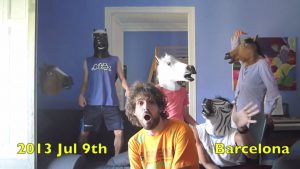
The remainder of material in Delgado’s catalog consists of a few short video sets. Early on, the channel featured a series called MHG, where Delgado arranged songs entirely out of sub-second-length video clips. In one of these videos, he recorded two clips per day over an entire year while traveling around the world to recreate Bach’s Cello Suite No. 1. He has also dabbled in a series called Destroying Jazz Standards. As you might expect, these videos take jazz standards and convert them to aggressive versions with punk drumming, distorted guitars, and a spirit of reckless abandon. It’s an awesome idea, and hopefully more will be done with it in the future.
Delgado’s YouTube channel is a goldmine, but at this point his view counts are moderate relative to the YouTube superstars. While browsing through the channel, watching video after video of quality material, one can only wonder how long it will be before Publio Delgado is a household name. If he keeps producing such high-caliber content, it won’t be long.
p.s. In addition to all his talent and effort, he’s a really nice guy. He enthusiastically let me sample his video Unintelligible empanada truck VS dog for my recent math-metal album ADD/Nihilism.
The Interview
Hi Publio, before we begin I would like to thank you for agreeing to do this interview. I am a big fan of your work and it is exciting to learn more about your creative process.
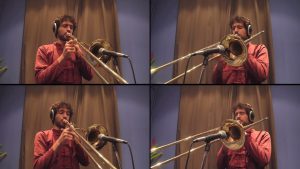
What does your musical history look like? How long have you been making music? Did you attend music school? Have you collaborated with other musicians in the past, or are you collaborating with anyone now?
My father always played guitar and wrote his own songs for fun, so music has always been close to me. I started playing guitar at 16 inspired by Punk-Rock bands, and attended a local music school in Barcelona, my hometown, since age of 18. Five years later I got a scholarship from Berklee College of Music, so I moved to Boston, MA, and spend 3 years there until graduation.
I was a member of many different bands before moving to the States, and had some other projects in Boston and NY as well. Right now I do perform live with other musicians eventually, but I mostly play by myself.
What does the process look like for the creation of a Harmonizator video? Do you know what the guitar melody is going to be before you begin working on the video, or do you have to experiment to find the melody that fits the video?
I first watch the video and try to hear the music on it. If I feel it has some potential I start working on it. I take every phrase one by one and loop them, try to “sing” them, find its notes on my guitar and finally record them. Reproducing the melody is the hardest and most annoying part of the process… but as soon as I’m done, the fun part starts: harmonizing! Finding chords is sometimes really easy and intuitive and it takes me only a few minutes. Some other times I can’t figure it out and it might take hours…
“Improvisation” is included in the Bandcamp tags for your acoustic music. How much of your recorded acoustic guitar music is improvised and how much is pre-written? What does the composition process look like for your acoustic music?
For some parts I have a clear idea of what I want the tune to sound like and every note is decided. For some other parts I just have a slight idea and try to decide how it will end up while recording. I never write charts for them, that gives me way more freedom when I’m performing them, and lets them naturally evolve over the years.
I don’t have any particular method to compose for my solo acoustic project. I just try to take any musical thought out of my mind and remember life experiences instead. Think about that night sky full of stars that blowed me away, or those moments I spent with that girl I fell in love with so strongly… Instead of trying to take control of music, let music take control of my body. It turned out to be the best and most beautiful way for me to create.
You have made quite a few videos over the years that stray from the Harmonizator and acoustic formats. Some of your videos are multitrack compositions and they are outstanding (for example: FFVII – Anxious Heart, Kakariko Village). Is there a reason why your albums are almost entirely solo acoustic guitar music? Have you ever considered making originals in the style of those videos?
Most of the time the only instrument I have access to is my acoustic guitar, so I guess that’s why my albums are mostly acoustic. I’d like to work on some new material with more instruments, though (as I did on a few tracks in my most recent album).
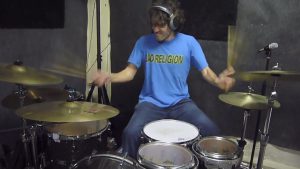
As a musician who comes from a punk background, there are two videos that grabbed my attention the very first time I found your channel: Destroying Jazz Standards. Was there any particular inspiration for these videos? Will we ever see more of this series?
My original idea was to make a bunch of those, but since almost all the instruments I’m using for them are borrowed from friends, and I record them whenever I have a little time when I briefly drop by my hometown, it’s not easy. I definitely wanna make more of them, let’s see if in 2017 I can record at least a couple!
Most of your music is instrumental. In some of your videos, you vocalize, but there are no lyrics. There are only a few videos where you sing words. You are clearly capable of singing lyrics, is there a reason that you usually choose not to?
I always had a hard time singing in front of people, I feel like I’m showing myself naked. Both singing and writing lyrics are too direct for me, I better leave it for people who do it well. I’d rather to say what I have to say through music without words. I do enjoy singing sometimes when nobody else can hear me lol.
There are a few videos on your channel where you are performing live. I see that you have traveled as far as Japan to play. Do you ever tour? If so, where have you performed? Do you have any plans to perform in the US in the future?
I’ve performed in Spain, France, Belgium, Netherlands, Germany, Austria, Hungary, UK, Ireland, Italy, Czech Republic, Italy, Brazil, US, Japan, Taiwan and South Korea. I haven’t been to the States for about 3 years now. I definitely want to go back but don’t know when yet. I’ve only been to the East Coast so I guess next time would be time to visit the west!
Last question: what is your favorite video on your channel right now and why?
It’s hard to choose one between all my videos but I guess it would be the one I harmonized myself as a baby in the bathtub. That childhood video reappeared in my life when I was have a hard time and reminded me of what was really important. And the whole story behind it is beautiful. I had so much fun recording it!
You can support Publio Delgado on Patreon. You can also find him on Facebook. His YouTube channel’s address is youtube.com/vendidou.
¹ Hermeto Pascoal pioneered the general idea used in the Harmonizator videos decades ago.
Henry Hey is a contemporary jazz pianist who inspired the Harmonizator series.
In 1997, Spastic Ink recorded A Wild Hare, a fusion-metal song where the melody follows dialog from Bambi.
² Not every video from the Harmonizator series is based on a viral video, though most are. Delgado sometimes harmonizes mundane footage, which is interesting because of the way it draws music from everyday life. One recent video takes a more serious approach and uses Martin Luther King Jr.’s I Have a Dream speech, which creates a profoundly different effect than the comedy videos.
³ Wondering what the Harmonizator technique sounds like as a full band?
How about what the Harmonizator band sounds like without the original audio?
Some more of the songs with the video muted can be found here.
Flesh Collage – Grigor
6 tracks (47 minutes) of krautrock/post-punk/darkwave. Tracked, edited, mixed, and mastered at Big Name.
Retail Monkey – ADD/Nihilism
I am very pleased to bring you my newest solo album. For fans of The Dillinger Escape Plan, The Locust, Daughters, Converge, and other bands of the mid-2000s era.
This was the first project that I began working on when I finished my current studio space. The recording process took nearly two years to complete. I had also been dreaming of actually recording these songs for almost 10 years by the time that I started working on it.
I would like to put forth a huge thank you to Stephen and Joel for their involvement in the writing process all those years ago.
Info from the Bandcamp:
“Instrumentals written by Stephen Navarrete, Joel Freeman, and Jon Lervold collaboratively over the internet via MIDI-based guitar tab software between 2004 and 2006.
We were teenagers at the time. Since we used TabIt to compose, we were able to write whatever the hell we wanted with no limitations based on how ridiculous or unplayable it seemed to us. We never figured real, recorded versions would exist. After spending another decade making music, it was within reach.
This album was performed, tracked, edited, mixed, and mastered by Jon Lervold at Big Name Recording Studio in Olympia, WA between January 2015 and November 2016. Vocals were written in early 2016.
bigname.org
Interlude 3 was graciously provided for use by the original artist, Publio Delgado. You can find his work here: youtube.com/user/vendidou and here: facebook.com/publiomusic.
Pulling off my Eyelids with a Pair of Pliers contains writing contributions by Alexander Galavodas, Mark Solomon, and Joseph Malicke.
Released on Big Name Records
BNR1700
bignamerecords.com“
Cassettes can be found on the Bandcamp or on Big Name Records.
Stardust VI
A God or an Other’s performance will take place Saturday, February 4th.
Day-by-day lineups can be found on Metal Injection.
Loiterer – Key West (Pure Data Algorithmic Composition)
A 5edo generative ambient composition made in Pure Data. Every playthrough is unique. This video shows merely one example of what might be generated by the algorithm. No MIDI was used in the patch; all sounds were generated by oscillator matrices I designed in PD.
I made this while on vacation in Key West, FL. The video footage is from the day after I finished the bulk of the composition’s programming.
This piece consists of four note generators, a lead generator, a monophonic sequencer, and a white noise generator, all of which automatically generate their own note choices, durations, and timbres. The overtones on the synths become more exaggerated as time runs on. Each playthrough automatically begins winding down around 3 minutes and finishes by 3:30. The patch can also be set to run indefinitely.
For anyone unfamiliar: “edo” means “equal distribution of the octave.” Almost all Western music is written in 12tet, the system that divides the octave into 12 steps of 100 cents each. This composition divides the octave into 5 steps of 240 cents each.









